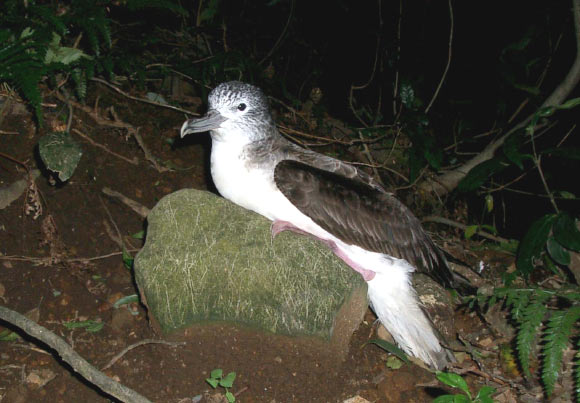Ornithologists from the University of Tokyo have observed excretions of streaked shearwaters (Calonectris leucomelas) in the open ocean using belly-mounted video cameras. These seabirds exhibited a tendency to avoid excretion while floating on the sea surface and consistently excreted during flight; excretion timings showed periodicity, occurring every 4-10 minutes during daylight hours with inter-event intervals varying within a few minutes.
The streaked shearwater (Calonectris leucomelas), a species of seabird found in the Pacific Ocean. Image credit: Kanachoro.
Understanding when and how often seabirds excrete at sea is important for understanding their potential influence on marine ecosystems.
Whales are known to redistribute nutrients through excretion, the ‘whale pump.’
Large and widespread populations of seabirds could similarly shape key pelagic ecosystem processes.
“I was studying how seabirds run on sea surface to take off,” said lead author Dr. Leo Uesaka, a researcher at the University of Tokyo.
“While watching the video, I was surprised that they dropped feces very frequently.”
“I thought it was funny at first, but it turned out to be more interesting and important for marine ecology.”
Using eraser-sized, backward-facing cameras strapped to the bellies of 15 streaked shearwaters, Dr. Uesaka and his colleague, Dr. Katsufumi Sato, recorded and analyzed nearly 200 defecation events.
They found that the birds almost always relieved themselves while flying and that defecation often followed shortly after takeoff.
Occasionally, the birds took off solely for bathroom breaks and returned to the water within a minute.
These findings suggest that they intentionally avoid pooping while floating.
“Streaked shearwaters have very long and narrow wings, good for gliding, not flapping,” Dr. Uesaka said.
“They have to flap their wings vigorously to take off, which exhausts them.”
“This means the risk of excreting on the sea surface outweighs the effort to take off. There must be a strong reason behind that.”
The researchers suspect this habit may spare the birds from fouling their feathers with feces, help them avoid attracting predators, or simply help the birds poop more easily compared to a floating position.
While in flight, the birds pooped about every 4 to 10 minutes.
The authors estimated that the birds excrete 30 grams of poop every hour, which is about 5% of their body mass.
“We don’t know why they keep this excretion rhythm, but there must be a reason,” Dr. Uesaka said.
To find out, the scientists plan to use cameras or temperature sensors with longer battery life, combined with GPS, to map where seabirds release their droppings at sea.
They hope that these future studies will offer further insights into the role of seabird feces in marine ecology.
“Feces are important. But people don’t really think about it,” Dr. Uesaka said.
The findings appear today in the journal Current Biology.
_____
Leo Uesaka & Katsufumi Sato. Periodic excretion patterns of seabirds in flight. Current Biology 35 (16): R795-R796; doi: 10.1016/j.cub.2025.06.058
